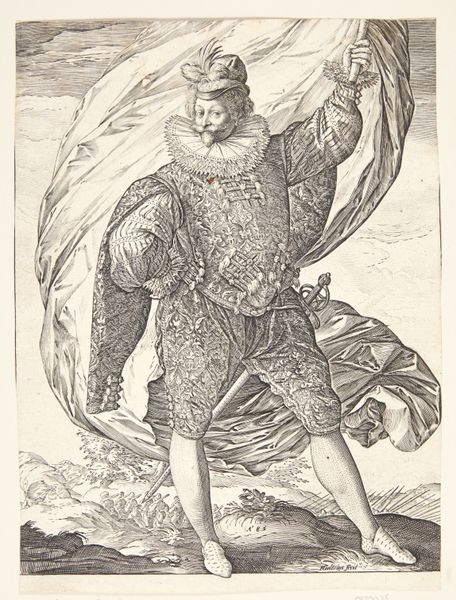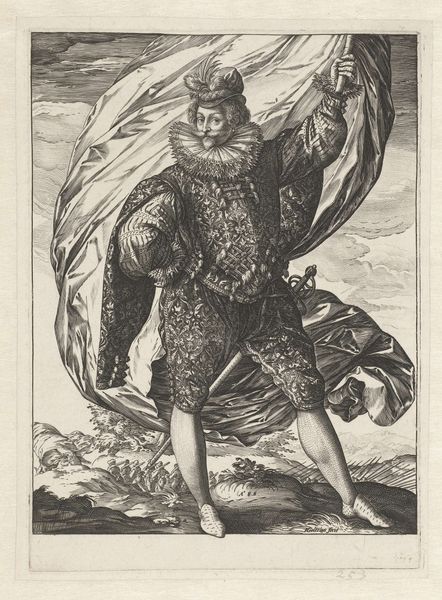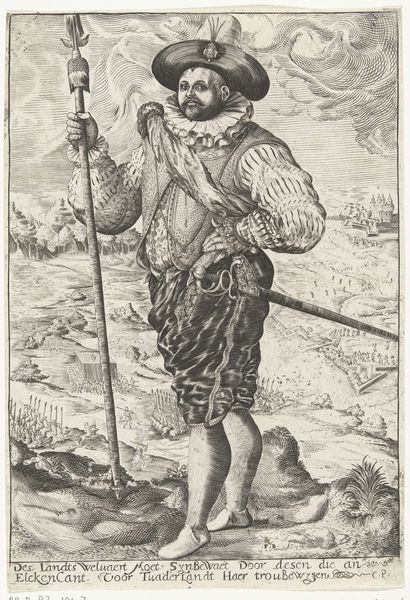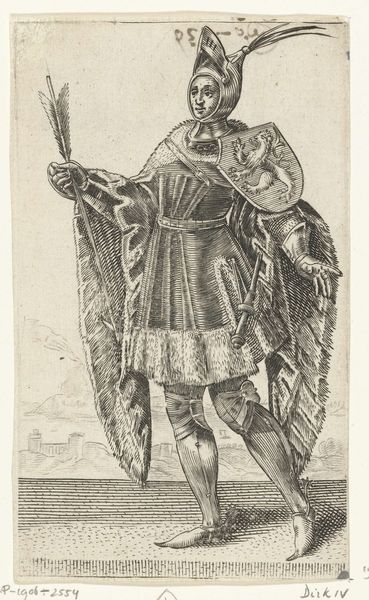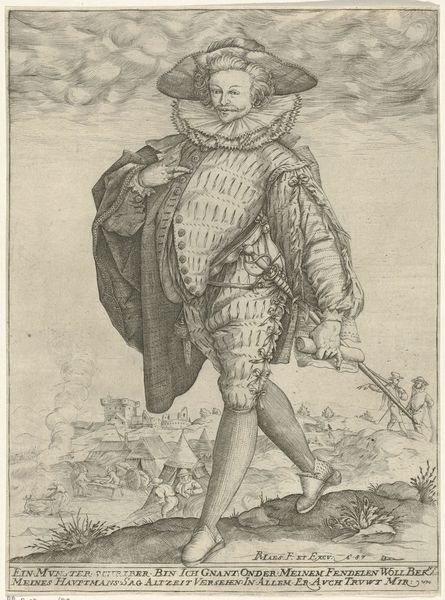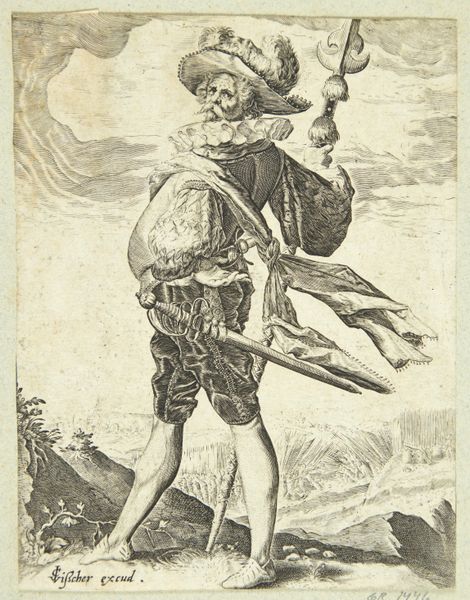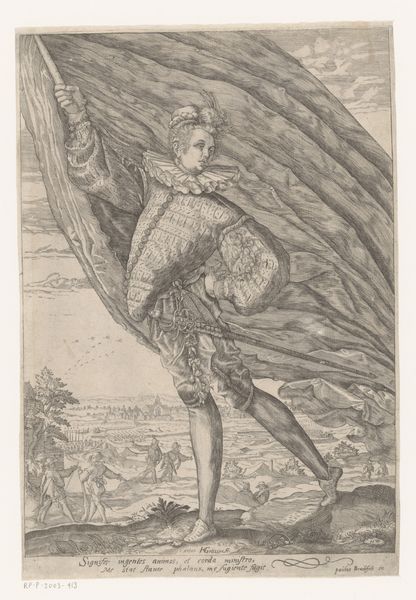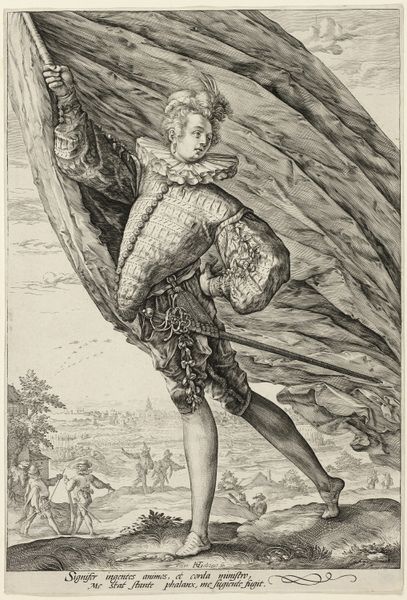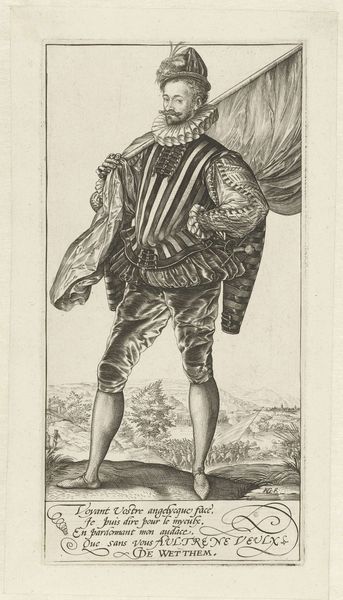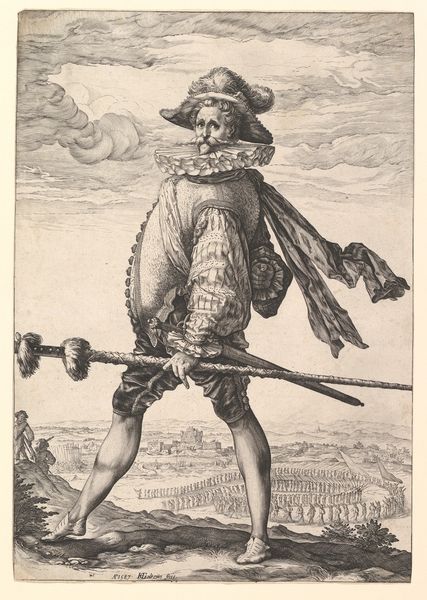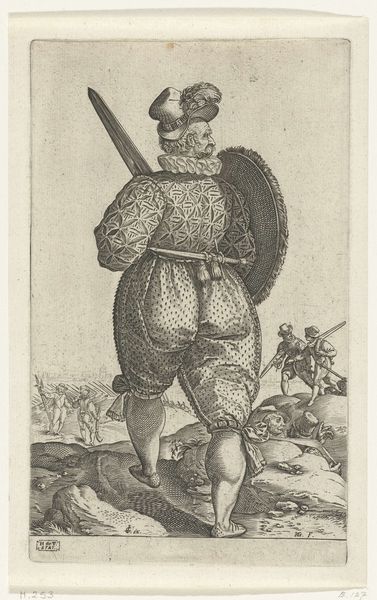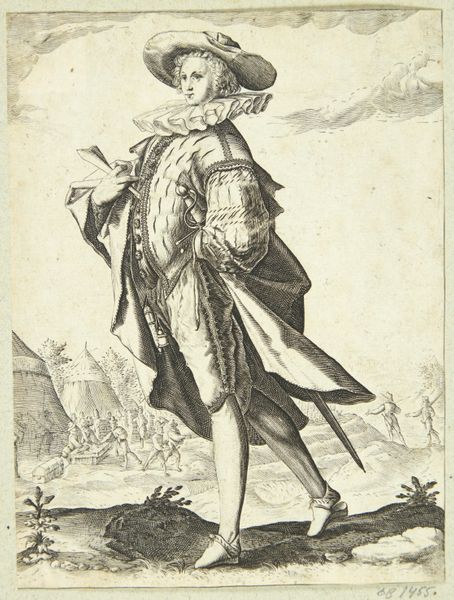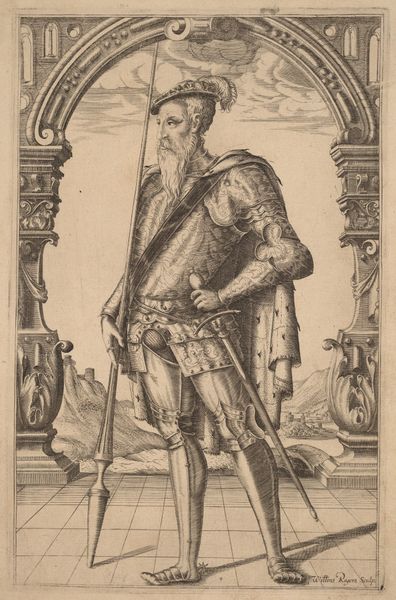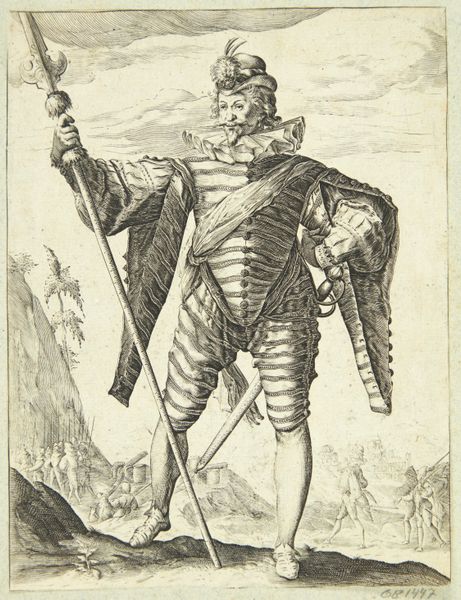
engraving
#
portrait
#
mannerism
#
figuration
#
history-painting
#
engraving
Dimensions: height 210 mm, width 155 mm
Copyright: Rijks Museum: Open Domain
This engraving of a flag bearer was made sometime in the 16th century by Pieter Maes. The image is created through the skilled use of line work, carefully incised into a metal plate, likely copper, and then printed onto paper. Look closely at the details of the flag bearer's elaborate costume, which are rendered with impressive precision. The textures of the fabric, the folds of the flag, and the intricate patterns on his clothing all demonstrate the artist's mastery of the engraving technique. In the 16th century, the ability to reproduce images through printmaking was a crucial technology, allowing for the wide dissemination of visual information and artistic ideas. Prints like this were not only works of art but also commodities, produced in multiples and sold to a growing market of collectors and enthusiasts. The labor-intensive process of creating an engraving underscores the value placed on skilled craftsmanship during this period. It challenges us to consider the intersection of artistic expression, technical skill, and economic exchange.
Comments
No comments
Be the first to comment and join the conversation on the ultimate creative platform.
